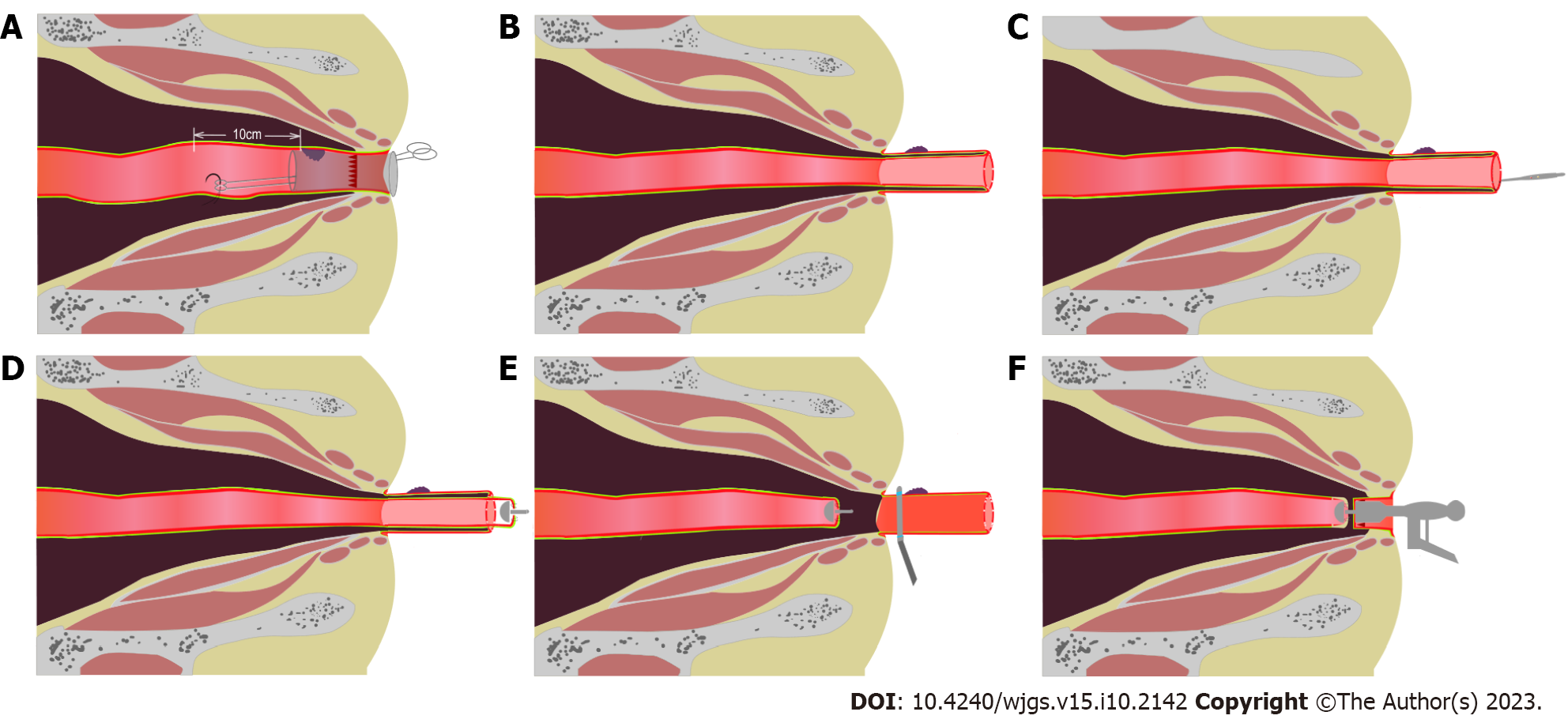Copyright
©The Author(s) 2023.
World J Gastrointest Surg. Oct 27, 2023; 15(10): 2142-2153
Published online Oct 27, 2023. doi: 10.4240/wjgs.v15.i10.2142
Published online Oct 27, 2023. doi: 10.4240/wjgs.v15.i10.2142
Figure 1 Surgical incisions.
A: Robotic resection using the natural orifice specimen extraction surgery I-type F method I-F surgical incisions; B: Robotic-assisted low rectal cancer resection surgical incisions. C: Camera port; R1: Robotic operating port; R2: Robotic operating port; R3: Robotic operating port; A: Auxiliary port.
Figure 2 Robotic resection using the natural orifice specimen extraction surgery I-type F specimen resection and digestive tract reconstruction.
A: About 10 cm from the upper edge of the tumor, the oval forceps were fixed to the bowel lumen; B: Turn the pre-excised bowel out of the anus; C: The bowel was incised at the oval clamp fixation; D: The anvil was placed into the bowel lumen; E: The rectum was cut off at the lower edge of the tumor with a cutting closure; F: The circular stapling was placed into the rectum to complete the sigmoid-rectal end-to-end anastomosis.
- Citation: Tao F, Liu DN, He PH, Luo X, Xu CY, Li TY, Duan JY. Robotic natural orifice specimen extraction surgery I-type F method vs conventional robotic resection for lower rectal cancer. World J Gastrointest Surg 2023; 15(10): 2142-2153
- URL: https://www.wjgnet.com/1948-9366/full/v15/i10/2142.htm
- DOI: https://dx.doi.org/10.4240/wjgs.v15.i10.2142










